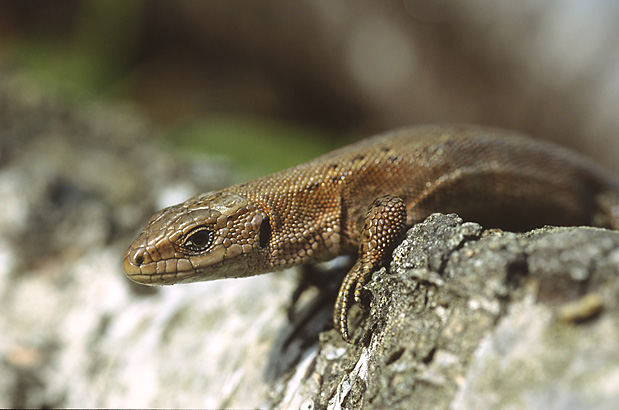| New Photos | Animal News | Animal Sounds | Animal Movies | Upload Photo | Copyright | Korean |
|---|
| Funny Animal Photos | Monsters in Animalia | Wiki Articles Fun Facts about Animals | Links | Home | Mobile A.P.A. |
|---|
| Image Info | Original File Name: Lacerta_vivipara_1_(Marek_Szczepanek)-Viviparous Lizard, European common lizard (Zootoca vivipara).jpg Resolution: 619x410 File Size: 94074 Bytes Upload Time: 2007:10:04 00:00:54 | |
| Author | Name (E-mail): Unknown | |
| Subject | Viviparous Lizard (Zootoca vivipara) - Wiki | |
 |
| Email : E-Card | Poster | Web Master Delete Edit Info Admin |
| Description | Viviparous Lizard (Zootoca vivipara) - Wiki
Viviparous lizard
The viviparous lizard or common lizard (Zootoca vivipara, formerly Lacerta vivipara) is a Eurasian lizard. It lives further north than any other reptile species. Identification The length of the lizard's body is less than 12 cm (excluding the tail). The tail is 1.25 to 2 times longer than the body. The limbs are short, and the head is rather round. Males have more slender bodies than females. The neck and the tail are thick. The collar and other scales seem jagged. The colour and patterning of this species is remarkably variable. The main colour is typically mid-brown, but it can be also grey, olive brown or black. Female may have dark stripes on their flanks and down the middle of the back. Sometimes females also have light-coloured stripes, or dark and light spots along the sides of the back. Most males and some females have dark spots in their undersides. Males have brightly coloured undersides ??? typically yellow or orange, but more rarely red. Females have paler, whitish underparts. The throat is white, sometimes blue. Range The viviparous lizard is widely distributed throughout Europe and Asia. Its range extends to the north of the Arctic Circle. It ranges from Ireland to Hokkaid?? and Sakhalin. It is absent from most of the Mediterranean area, although it occurs in northern Portugal and Spain, northern Italy, Serbia, Republic of Macedonia and Bulgaria. It is also absent from the area surrounding the Black Sea. In the southern parts of its distribution range the species lives at high elevations, occuring as high as 3,000 metres in the Alps. In these areas the viviparous lizard lives in damp places or near water, including meadows, swamps, rice fields by brooks and in damp forests. In the northern part of the range the species is also found in lowlands, where it occurs in drier environments, including open woodland, meadows, moorland, heathland, fens, dunes, rocks, roadsides, hedgerows and gardens. It lives mainly on the ground, although it may climb onto rocks, logs and low-growing vegetation. Behaviour The viviparous lizard feeds on invertebrates, mostly small insects. It shakes its prey in its jaws before it chews it and swallows it whole. In early spring, late autumn, and cool summer days it basks in the sun to reach its optimum body temperature, which is about 30°C. The lizard mates in April or May. Males take females in their jaws before mating ??? if the female is not interested, she will bite the male fiercely. The offspring develops for approximately three months inside the female. The name of the species is derived from its ability to give birth to live young, an adaptation to a cool climate ??? but some southern populations are oviparous (egg-laying). The 3-10 young (or eggs) are usually produced in July. The blackish young measure about 3 cm, and when first born are surrounded by egg membrane, from which they break free after about a day. Males reach sexual maturity at two years old, females at three years old. Individuals from viviparous and oviparous populations may be hybridised, but with significant embryonic malformation (Heulin et al 1989). In northern regions viviparous lizards begin hibernation in September or October, underground or in log piles. Hibernation ends about mid-February. Further south the species is active throughout the year. http://en.wikipedia.org/wiki/Viviparous_lizard
| |||
| Copyright Info | AnimmalPicturesArchive.com does not have the copyright for this image. This photograph or artwork is copyright by the photographer or the original artist. If you are to use this photograph, please contact the copyright owner or the poster. |
|
|
|
| |||||||
| CopyLeft © since 1995, Animal Pictures Archive. All rights may be reserved. | ||||||||
Stats